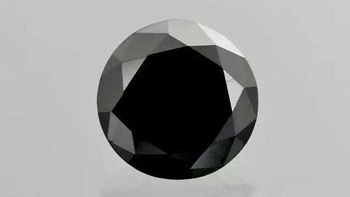Boron carbide, alias black diamond, has a molecular formula of B4C, usually grayish black powder. It is one of the three hardest known materials (the other two are diamond, cubic boron nitride), used in tank armor, body armor and many industrial applications. It has a Mohs hardness of 9.3.

Professor Xiong Xiang from the Institute of Powder Metallurgy, Central South University, said that hypersonic flight means that its flight speed is equal to or greater than 5 times the speed of sound, that is, at least 6,120 kilometers per hour. At such a high speed, the flight from Beijing to New York can be completed within 2 hours, provided that the key structural components of the aircraft can withstand severe air friction and hot air impact of up to 2000-3000 ° C without being damaged. . The newly discovered ultra-high temperature ceramic coatings and composite materials from Central South University provide better protection for the above components. It is reported that this is the world's first synthesis of this quaternary boron-containing carbide single-phase ultra-high temperature ceramic material, and made into a coating, perfect "fusion" with carbon-carbon materials. In the current field of new materials, the mainstream is the study of mixed materials in binary compound systems. Therefore, its successful development will greatly promote the application of quaternary system materials in the field of hypersonic.

The novel ceramic coating modified carbon/carbon composite material is composed of quaternary boron-containing single-phase carbide composed of zirconium, titanium, carbon and boron elements, and has a stable carbide crystal structure. It is mainly obtained by introducing a multi-ceramic phase into a porous carbon/carbon composite by an infiltration process. The ultra-high temperature ceramic combines the high temperature adaptability of carbides with the anti-oxidation properties of borides, which makes the coatings and composites exhibit superior ablation resistance and thermal shock resistance. In addition to withstanding the ultra-high temperature test of 3000 °C, the ceramic oxide has a low oxygen diffusion rate, high-temperature self-healing ability, ceramic coating dense and gradient structure, which also makes the ceramic exhibit a lower material than other ceramic systems. Ablation loss rate.
“Because this ultra-high temperature ceramic combines the high temperature adaptability of carbides with the anti-oxidation properties of boride, the above coatings and composites exhibit superior ablation resistance and thermal shock resistance, which is the key to hypersonic vehicles. The promising candidates for the parts," said Xiong Xiang.
The research results of the team research and development were published on June 15th in Nature Communications. The State Key Laboratory of Powder Metallurgy of Central South University is the first completion unit of the thesis. Professor Xiong Xiang is the first correspondent and Zeng Yi. The doctor is the first author. The partner unit, the University of Manchester, UK, characterized and analyzed the material.
Once published, the article has received extensive attention from foreign academic circles and the media. In the first three days after the publication, the download volume exceeded 5,000 times, while the other articles published on the same day were downloaded 300-900 times. The British "Daily Mail", "The Economist", the United States "Yahoo", "Public Machinery", Russia's "Satellite News Agency" and other dozens of mainstream media and authoritative academic institutions in the world have given extensive attention and coverage of this research. . According to the reviewer of Nature Newsletter, "The above research results will ignite the academic enthusiasm and interest in the application of quaternary system materials in the hypersonic field, because this represents a very promising material system."

Since 2002, with the support of the National 863, 973 and the National Natural Science Foundation, under the leadership of Professor Chang Xiang, a scholar from the Yangtze River, the team started with a medium-high temperature (<1600 °C) anti-oxidation coating of carbon/carbon composites. Look for a new ultra-high temperature ceramic coating material with excellent oxidation resistance and ablation resistance. In the course of the research, the material system screened from the initial silicon carbide to the subsequent strontium carbide, titanium carbide, zirconium carbide, zirconium boride, tantalum carbide and other dozens of systems and hundreds of high-temperature materials, almost involved All existing ultra-high temperature ceramics and high temperature composites. Up to now, the breakthrough in the development of new ablation-resistant ceramic coatings at 3000 °C ultra-high temperature environment has been achieved, which lasted for 15 years.
Luoyang Trunnano Tech Co., Ltd (TRUNNANO) is a professional Boride Powder manufacturer with over 12 years experience in chemical products research and development. If you are looking for high quality Boride Powder, please feel free to contact us and send an inquiry.


